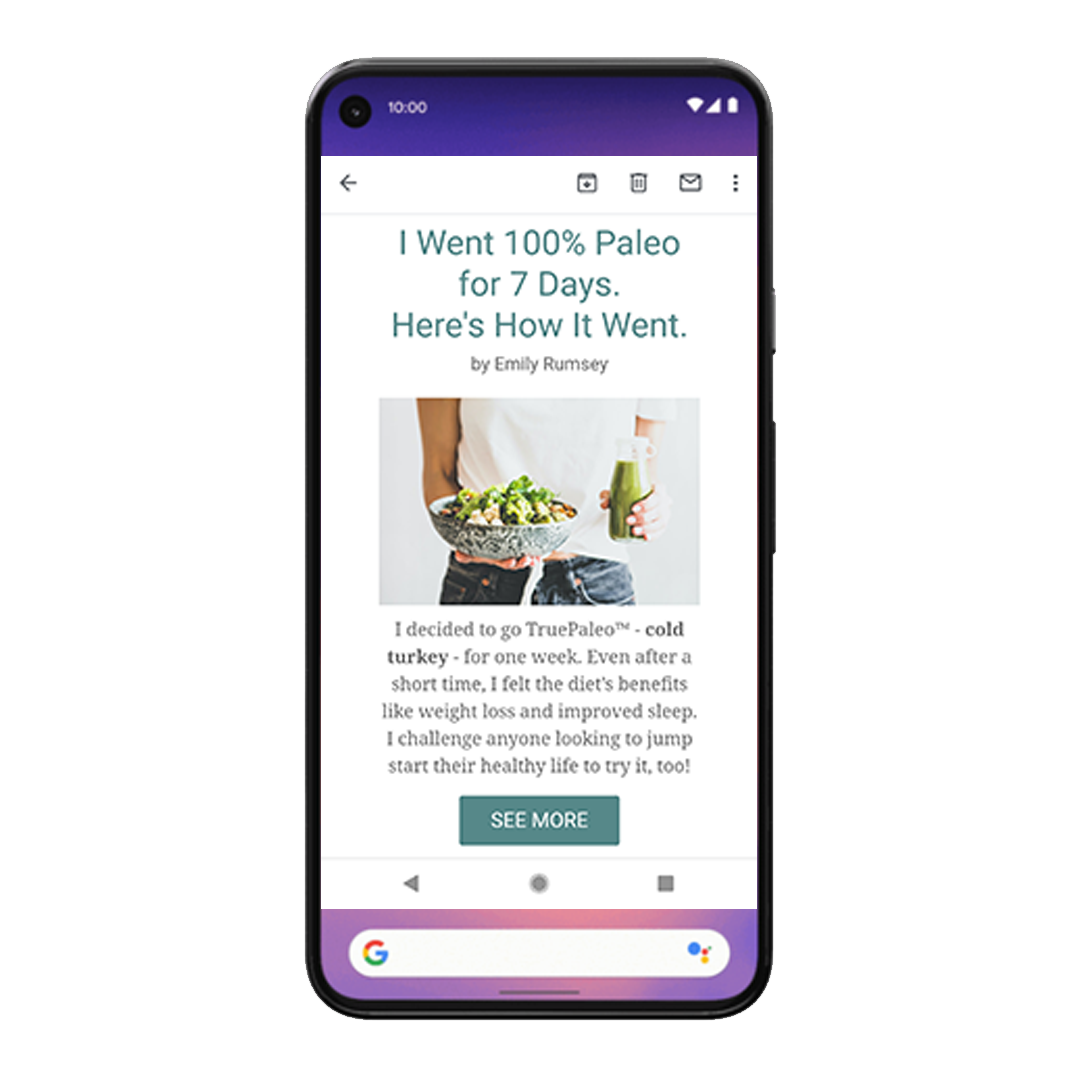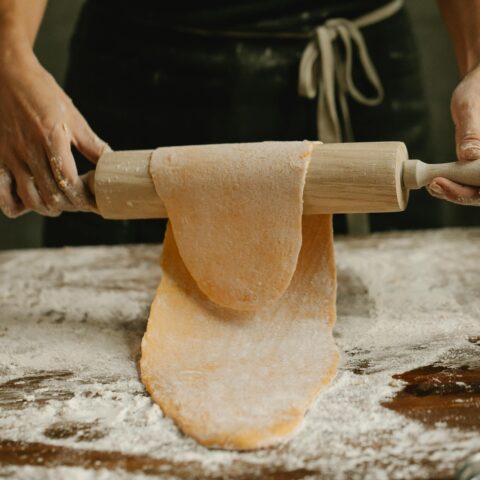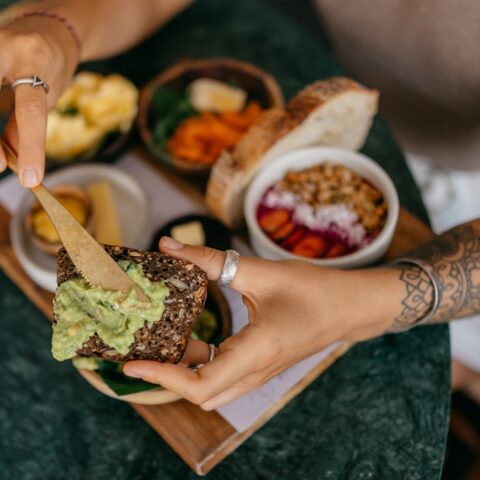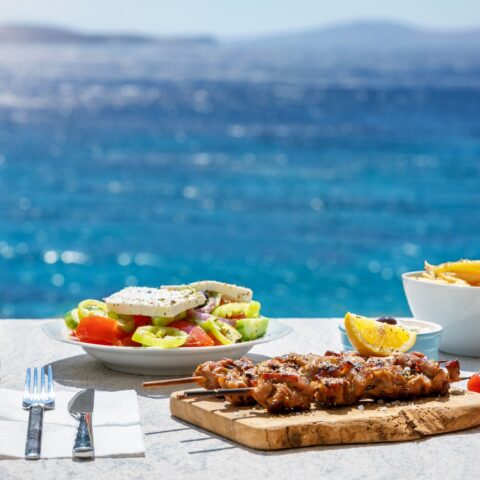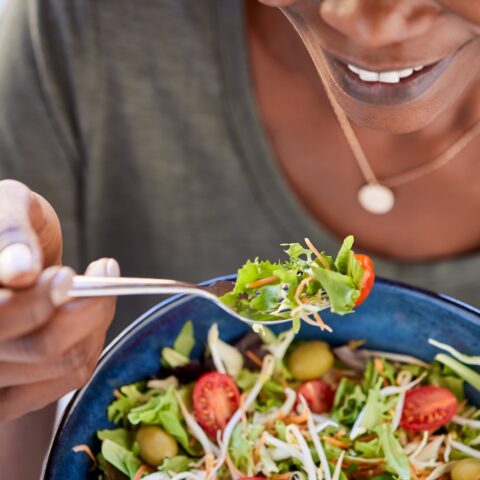Whole30 vs. Paleo: Which Should You Choose?
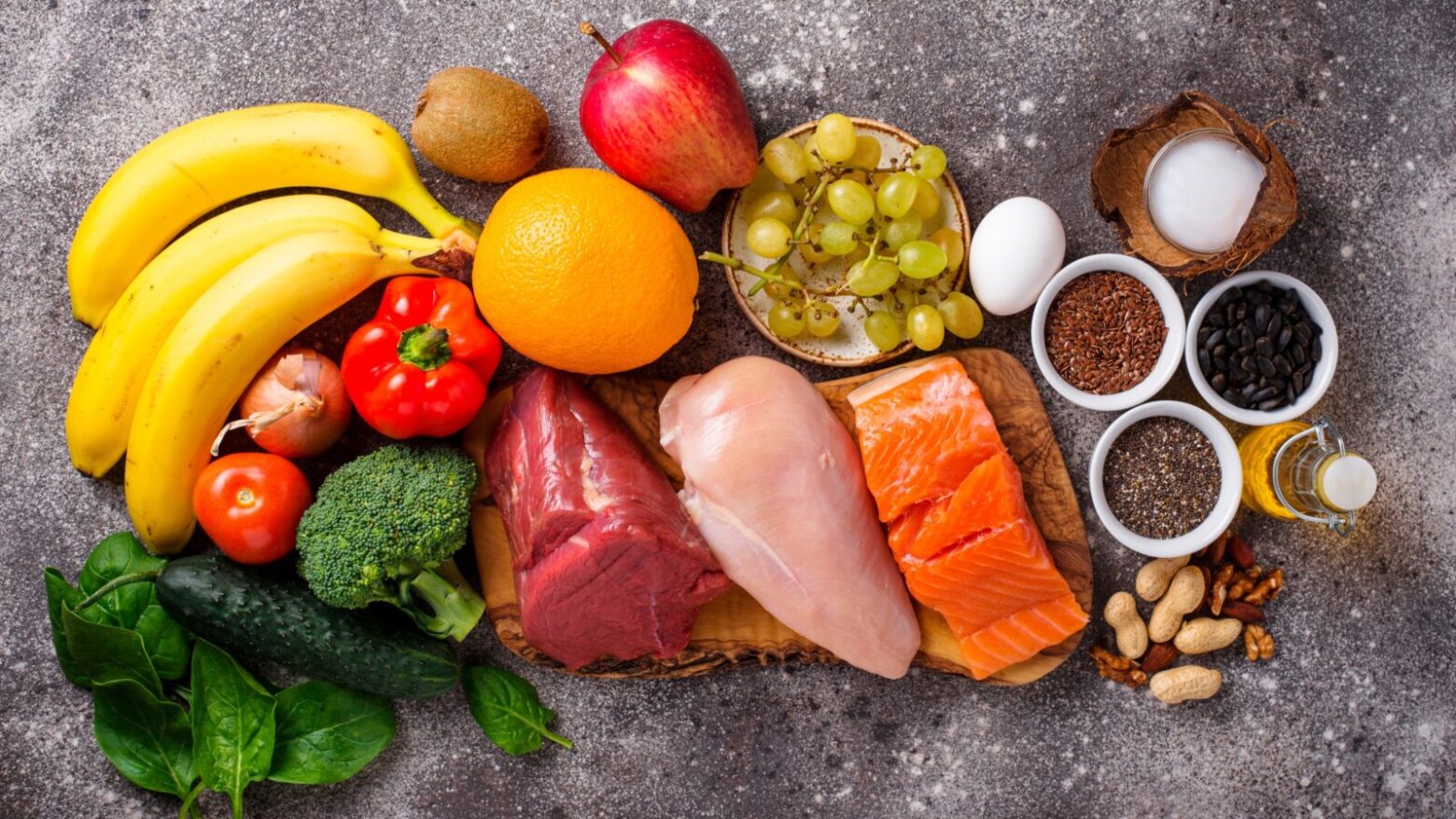
If there’s one thing most of us can agree on, it’s that diet fatigue is real. Even if you’ve been Paleo for a while, you might remember the days of “diet hopping,” which were spent trying one diet after another, chasing promised results.
While it’s not a bad thing to try different diets to see what works best for you, it’s not a sustainable path to long-term health.
Which brings us to one of the latest popular trends in dieting: Whole30®. If you’ve been thinking about giving it a try to see if it could be for you, first let us dive into exactly what Whole30 is and what it offers in comparison to the standard Paleo Diet®.
What Is Whole30?
Think of the Whole30 program as a shorter but stricter version of The Paleo Diet. The idea is that you address food sensitivities, intolerances, and other gut or health issues, while also “resetting” your relationship with food and helping to kickstart weight loss.
Because of this, the first 30 days of Whole30 are very strict, focusing only on foods such as meats, fish, bone broth, low-sugar fruits, nuts, and veggies. After this first month, other foods are slowly introduced back into the diet, one at a time, in order to see if they cause issues and need to be eliminated entirely.
Whole30 is also sometimes used to address autoimmune issues, since various foods have been shown to cause immune reactions, and skin and digestive issues. In addition, it has become fairly popular as a short-term weight loss diet. [1]
Whole30 vs. Paleo
While Whole30 and The Paleo Diet are very similar on the surface—both promote vegetables, fruits, meats, fish, and nuts while eliminating inflammatory foods like grains, simple sugars, and dairy—Whole30 is designed to be a 30-day, short-term reset.
The Paleo Diet, on the other hand, is a long-term, sustainable lifestyle change. The goal with Paleo is to follow the ancestral way of eating and living, with loose enough guidelines that make it easy to follow for the long haul.
For example, Paleo is more lenient when it comes to things like having the occasional treat or a glass of wine—both are frowned upon during Whole30, which is very strict for 30 days at a time.
It is also worth noting that as early as 2002, Dr. Loren Cordain wrote about an elimination approach for people suffering from conditions like autoimmune diseases—long before Whole30 was launched. Dr. Cordain’s elimination diet is remarkably similar to Whole30 and involves a strict Paleo Diet for approximately a month, followed by the re-introduction of eliminated foods to see which trigger the condition.
Which Is Better: Paleo or Whole30?
The short answer? It depends on your goals.
Let’s start with the positives of Whole30, and why it might be a good idea to try.
When Whole30 Might Be Worth a Try
If you’ve been dealing with digestive or autoimmune issues that you can’t seem to shake, a stricter approach may be just what you need to “reset” your body. In this way, Whole30 may be a good challenge. We also offer a 28-Day Paleo Reset meal plan and recipes that you may want to consider.
In addition, Whole30 can also be a good kickstart to weight loss—as long as you plan to keep the weight off by continuing to eat a version of the diet after the initial 30 days. Weight loss under Whole30 is also more likely if you prefer a “cold-turkey” approach and if you are the kind of person who can sustain lasting changes by building habits (or in this case, food patterns) all at once, rather than more gradually over time. For instance, you may have an extreme sweet tooth that you want to tamper, and the best approach for you might be to go completely free of sweets to break your habit.
In other words, taking your personal psychology into account is a good way to determine if doing something like Whole30 will be beneficial for you.
The Downsides of Whole30
It’s hard. Whole30 is hard because it’s so strict. Following Whole30 rules is very similar to going 100% Paleo for 30 consecutive days, an approach that we at The Paleo Diet do not recommend for most people.
Expectations: Many people dive into very strict elimination diets like Whole30 thinking that it’s going to be the magic pill that they can take once, and then go back to living and eating “normally.”
This would mean going back to eating things like dairy, grains, and sugar, which have been shown to cause digestive, autoimmune, and other health issues. [2-3]
Or, they go into a diet like this in an attempt to sustain it, quickly realize they can’t, and then swear off all “diets.”
Why The Paleo Diet Is Best for the Long-Term
Unless you’re dealing with food sensitivities or are using Whole30 as a kickstart, The Paleo Diet is a much more sustainable option.
Paleo is not meant to make you feel deprived. Instead, we encourage newcomers to gradually transition onto The Paleo Diet. For those who have a few months of Paleo eating experience and who are seeing success sustaining this new way of eating, we encourage moving to eating Paleo up to 85% of the time. The other 15% of meals? We encourage you to eat the snacks and desserts you crave as an occasional treat to help you enjoy life and stay on track most of the time.
The Paleo Diet allows you more variety within its template, which would also have been a key factor in the Paleolithic human’s diet.
For instance, if a hunter-gatherer came across a spot of honey, they wouldn’t shun it—they would indulge in it. But coming across that honey was an infrequent thing. They couldn’t simply buy concentrated honey off the shelf the way we can today. In other words, they would have had it once in a while.
Our Advice?
The thing that our Paleolithic ancestors had going for them was that they couldn’t give up on eating the way they were designed to eat because there wasn’t an alternative. We do have choices. As such, you may find yourself giving up when trying to use crash diets or other extremely restrictive diets to substitute for what is meant to be a lifestyle of healthy choices.
Instead of using Whole30 for short-term gains, try going Whole Life with Paleo, and reap long-term, sustained health.
Still unconvinced? Check out our deeper dive into Whole30.
Whole30® is a registered trademark of Thirty & Co, LLC.
References
- Aaron Lerner, Yehuda Shoenfeld, and Torsten Matthias. “Adverse effects of gluten ingestion and advantages of gluten withdrawal in nonceliac autoimmune disease.” Nutrition Reviews. 2017 Dec 1;75(12):1046-1058. doi: 10.1093/nutrit/nux054. <https://pubmed.ncbi.nlm.nih.gov/29202198/>
- Karin de Punder and Leo Pruimboom. “The Dietary Intake of Wheat and other Cereal Grains and Their Role in Inflammation.” Nutrients. 2013 Mar 12;5(3):771-87. doi: 10.3390/nu5030771. <https://www.ncbi.nlm.nih.gov/pmc/articles/PMC3705319/>
- Manzel A., Muller DN., Hafler DA., Erdman SE., Linker RA., and Kleinewietfeld M. “Role of ‘Western diet’ in inflammatory autoimmune diseases.” Curr Allergy Asthma Rep. 2014 Jan;14(1):404. doi: 10.1007/s11882-013-0404-6. <https://www.ncbi.nlm.nih.gov/pmc/articles/PMC4034518/>
Megan Patiry
Megan Patiry is a freelance writer specializing in ancestral nutrition. She has personally followed a Paleo-style, ancestral style of eating for over a decade.
More About The Author
